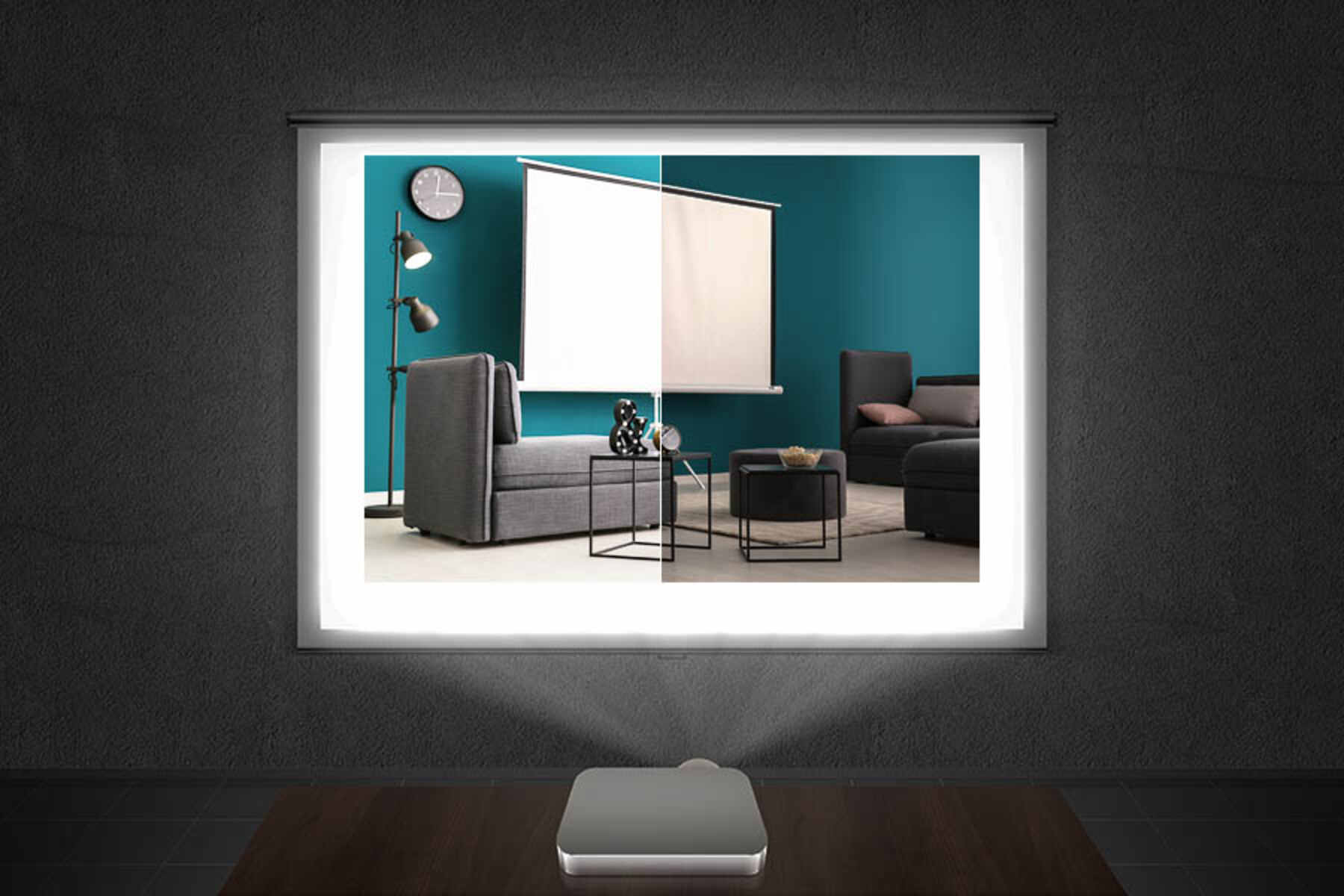Introduction
A projector screen is an essential component of any multimedia or home theater setup.
It is the surface onto which the projected image is displayed, allowing viewers to enjoy high-quality visuals.
One important factor to consider when choosing a projector screen is its gain.

Gain refers to the amount of light that a screen reflects back to the viewers.
A screen with a higher gain value reflects more light, resulting in a brighter image.
Gain plays a crucial role in optimizing the visual performance of a projector screen.
It is represented by a numeric value, typically ranging from 1.0 to 2.5.
It is important to note that the gain value alone does not determine the overall image quality.
Other factors such as projector brightness and ambient lighting conditions also play a significant role.
A screen with higher gain reflects more light back to the audience, resulting in a brighter image.
Conversely, a screen with lower gain reflects less light, resulting in a dimmer image.
The increased brightness compensates for the light interference, allowing the audience to view a clear and vibrant image.
On the other hand, dedicated home theaters or controlled lighting environments often benefit from screens with lower gain.
In these options, excessive brightness can lead to eye strain and a loss of contrast.
A lower gain screen helps to maintain a more balanced and natural image by reducing the reflected lights intensity.
This makes them ideal for scenarios where multiple viewers need optimal viewing experiences from different perspectives.
Low gain screens excel in providing wide viewing angles, improved contrast, and reduced surface imperfections.
However, they may come with the trade-off of reduced image brightness in environments with high ambient light.
Here are the steps:
2.
Professional equipment such as spectroradiometers or photometers can provide accurate readings for gain values.
Ultimately, the right choice of gain depends on your specific requirements and preferences.
Take into account factors such as the viewing environment, projector capabilities, and desired visual experience.
Consider the trade-offs of brightness, viewing angles, contrast, and imperfections to make an informed decision.